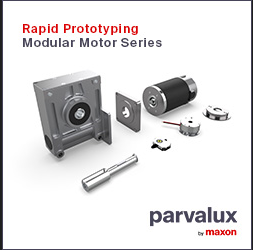The Use of Laser Cutting in Sheet Metal Prototyping
Though there are a number of ways that sheet metal can be shaped and cut, few are as precise, reliable and cost effective as laser cutting. The technology involved in laser cutting is so effective that a continuation and improvement of its future capabilities is inevitable.
The Use of Laser Cutting in Sheet Metal Prototyping
Though there are a number of ways that sheet metal can be shaped and cut, few are as precise, reliable and cost effective as laser cutting. The technology involved in laser cutting is so effective that a continuation and improvement of its future capabilities is inevitable.
Categories of Laser Cutting Tools
Laser cutting is a versatile tool whose use can be applied across a broad spectrum of materials such as stone, glass, wood, plastic and sheet metal.
• A CO2 laser is a popular type of laser cutting tool that is prized because it is easy to control and highly accurate. A beam made of concentrated CO2 gas is activated by electricity to fuel the cutting.
• A fiber laser uses glass fibers to increase the potential of a seed laser. The result is a laser that is both more powerful and more precise when compared to a CO2 laser. A fiber laser is often used for metals because of its focused and intense beam.
• A crystal laser is similar to a fiber laser except it uses both pump diodes and crystals to generate the intensity of its beam. A crystal laser has a comparable performance and application potential to a fiber laser.
Advantages of Using Laser Cutting with Sheet Metal
There are numerous reasons why using laser cutting is the preferred method when developing a sheet metal prototype.
1. More Intricate
Because a laser has an average size of only a few micrometers, it allows for precision to create and cut sheet metal prototypes that would be impossible if other methods were utilized. This results in an almost limitless array of possibilities.
2. Finished edge
Using a physical technique, such as a blade, to cut sheet metal results in imperfections, such as roughness and burrs, along the edge. For many designs, these would need to be buffed out or otherwise removed which can increase the time it takes for the end user to receive their product. Using a laser eliminates this issue.
3. Scalability
Laser cutting tools enable companies to cut as many or as few sheet metal prototypes as their customers need. These lasers often don't have to be adjusted or retooled to accommodate the design of a particular piece. When adjustments are inevitable, they are easier to accomplish when using a laser cutter.
Laser Cutting and the Future
As of right now, CO2 lasers are still the industry standard though fiber lasers are being adopted rapidly. Although fairly new, the fiber laser technology is projected to become standard over the next 10 to 15 years. Many companies will continue to use their CO2 lasers alongside their fiber lasers, giving them more options for designs they can offer their customers. Laser cutting could also be paired with 3D printing to create precise and reliable products for customers.
3E Rapid Prototyping (3ERP) was founded on the three Es philosophy (Excellent, Efficient and Economic). Using this foundation, 3ERP delivers the sheet metal prototypes their customers need quickly and precisely. With the ability to fabricate quantities from one to thousands with a turnaround time of only 5 to 10 days, 3ERP delivers the high-quality prototypes their customers expect.
Featured Product

Rapid Prototyping with the Modular Motor Series
Quick to configure. Quick to build. Quick to deliver. Parvalux understands the importance of getting product in the hands of customers quickly and efficiently. The Modular Range does just that allowing customers to configure their own solution, selecting motor and gearbox, adding encoders and brakes to create a solution perfectly suited for their specific applications such as conveyor belt systems, picking systems, parcel sorting equipment, pallet shuttles and automated storage and retrieval systems (ASRS). Read our modular range guide for specifics.
